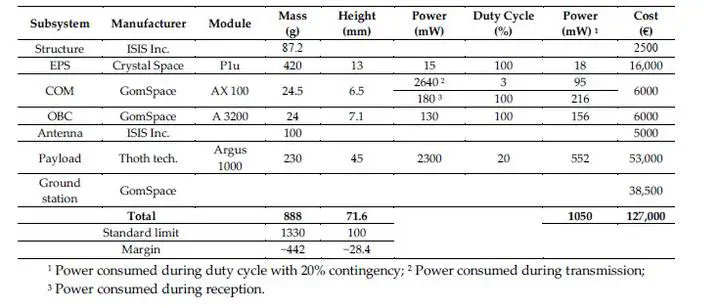
Abstract
Nowadays, nanosatellites are widely used in space technology due to their small size, ease of deployment, and relatively short development period. CubeSat specifications have been suggested as an effort to standardize nanosatellite mission design. Standardization opens the door for inter-CubeSat communications that can be used to form a CubeSat Cloud and mimic regular large multifunctional satellites with wide range of features, measurements, and sensing capabilities. In this paper, we introduce a Comprehensive CubeSat (CoCube, Gurgaon, India) online database. CoCube database focuses mainly on the different subsystems used during the design and implementation stages of existing CubeSat missions. Based on the lessons learned by comparing various CubeSat design alternatives and components’ structures and analyzing the best practices of CubeSat development, LibanSAT design is introduced. LibanSAT is a 1U CubeSat that serves two main objectives:(i) greenhouse gases observation and (ii) educational purposes. We benchmarked off-the-shelf subsystems from various suppliers and chose the most suitable for our target mission based on cost, size, weight, and power consumption. Finally, we introduce a new CubeSat security algorithm based on predefined anomaly detection baseline that serves as intrusion prevention system for the control channel.